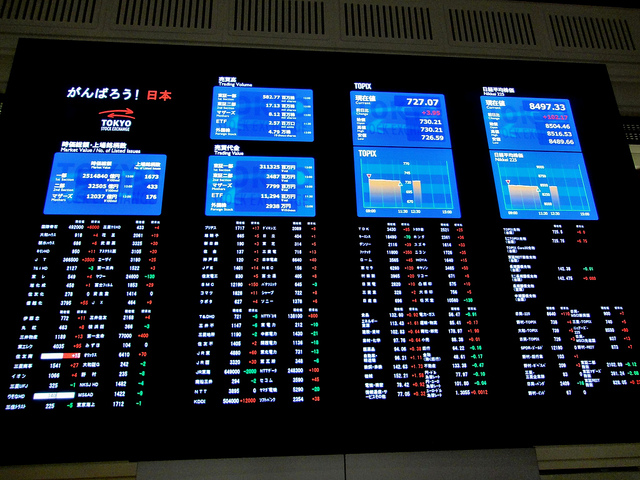The forex market is always a newsworthy entity, although not always for the right reasons. Regardless of the controversies that have undermined the market’s appeal since the recession, however, the foreign exchange remains a lucrative and profitable sector that offers incredible liquidity to investors.
The world of forex is also incredibly complex, however, and for those seeking to trade the currency markets, it’s essential to fully understand the terms and jargon used by the professionals.
One of the most important concepts that you’ll hear about is technical analysis. Those who practice technical analysis believe that historical price action can be used to predict future market movements, and this forms one of the fundamental foundations of their strategy.
It is also particularly beneficial for young professionals and those who look to trade on a part-time basis, as the historic and real-time insight offered by technical analysis helps individuals to achieve a healthy outlook and work-life balance over time.
Why Forex Traders Use Technical Analysis and how it is best applied
So if you’re considering how you’re going to trade, then there is no doubt that technical analysis will have a critical bearing on your success. Technical analysis is particularly handy for those who trade the forex markets, due to their around the clock opening hours. This constant cycle of movement provides a wealth of data for would-be traders to analyse, and this makes technical tools like trends, charts, and indicators particularly suited to currency trading.
Those who use technical analysis trade in a very different manner to those who employ different methods. One of the key variances is how they treat the factors that influence the markets. Rather than focusing on economic, political, social, and psychological drivers, they assume that these have already been factored into the exchange rate displayed, and that all that’s important is the trend and flow of capital. This helps traders to focus solely on the underlying laws that govern change, rather than becoming distracted by external economic and geo-political factors that influence daily forex trades in 2016.
One of the primary aims of technical traders is to correctly predetermine whether a currency combination will trend in a particular direction, or whether it will travel sideways or remain range-bound. They tend to use trend lines as the basis of their hypotheses, connecting historical levels to inform their decisions. The levels of support and resistance that they study are then used to predict whether the trend, or lack of, will continue.
The Currency Combinations Most Suited to Technical Analysis in the current market
Any trader can employ technical analysis at any time, yet it seems to suit some currency combinations to a greater degree than others. The major pairings, in particular, often display the strongest trend characteristics, with the EUR/USD, USD/JPY, USD/CHF, and GBP/USD frequently proving predictable. This is even true in the current market, as the British Pound currently remains strong despite the uncertainty that exists around UK’s potential departure from the EU.
It’s important to take this information into account when selecting your combinations, as it will heavily impact how well a particular strategy suits the currencies contained within your portfolio. Strong and reliable currency pairings can be a Godsend during times of austerity or volatility, and technical analysis can help you to determine which options are most suitable at any given time.
In Summary: Using Technical Analysis to drive your Forex Trades
The tactics that you choose to use will be one of the greatest determiners of your success on the forex markets, and this means that it’s essential to spend some time assessing which of them would work best for you. So while there is no doubt that technical analysis can inform and drive your trades in 2016, those of you who are considering starting a secondary career as a forex trader should also understand precisely how this would suit their prevailing strategy?



 Bitcoin
Bitcoin  Ethereum
Ethereum  Tether
Tether  XRP
XRP  Solana
Solana  USDC
USDC  Cardano
Cardano  TRON
TRON  Lido Staked Ether
Lido Staked Ether  Avalanche
Avalanche  Toncoin
Toncoin